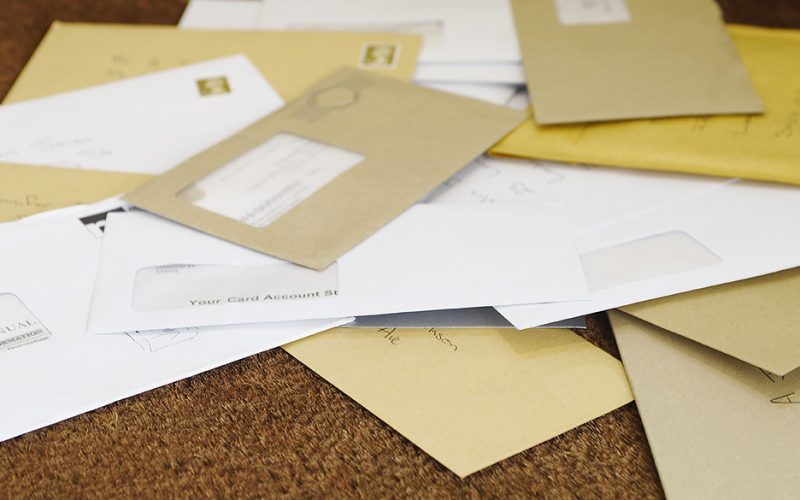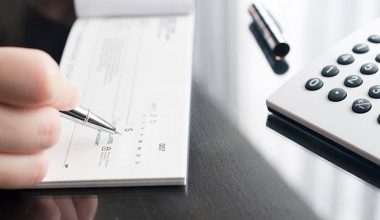You may have noticed that handwritten mail is making a tiny comeback after being overshadowed for years by the speed and convenience of email. Despite this gradual return to the forefront of communication, sixty percent of Americans have sent less than five handwritten letters in the last decade. If you are part of that statistic, you may be asking how to send or mail a letter, needing a refresher on the specifics, or simply wanting to learn more about the procedure. If so, this step-by-step instruction is exactly what you need.
How Should I Send a Letter?
There is no one way to send or mail a letter; there are numerous ways to send a letter, and how you do it depends on what your letter is about, who the receiver is, your time restrictions, your cost limits, and other factors. We’ve put together a convenient list of alternatives for you.
- Send a Hand written Letter through a Post Office
- Email is the most cost-effective way to send a letter (Gmail, Hotmail, and yahoo are free)
- Email is the quickest way to send a letter (Gmail, Hotmail, and yahoo are free, and your recipient will receive the letter instantly)
- The cheapest way to send a letter via snail mail is to go to your local US Post Office. You will not be charged a fee for using an online service.
- If you want to send a letter cheaply but avoid the post office lines, you can utilize a site like Mailform.io.
- FedEx is the quickest way to send a letter through snail mail.
- If you want to be certain that you receive a tracking number, the cheapest alternative is USPS Certified Mail.
- If you want to ensure that the letter is signed for by a human, use USPS Certified Mail with Return Receipts.
Read Also: Business Email: How to Create a Business Email Stress-Free!!! (+ All You Need)
What is the Best Way to Send a Handwritten Letter?
To send a letter, you just need four items: an envelope, a pen, a stamp, and, of course, your letter.
#1. Write the letter
Unlike in the early days of the postal service, when envelopes and stamps were not yet available, you now have to choose which envelope to place your letter in. The days of merely folding the paper and sealing it tight are long gone; now you need an extra sheet of paper to secure and safeguard your mail.
So, first and foremost, you must send the letter for delivery. While this may appear to be the simplest thing to do, there are (maybe unexpectedly) some considerations to consider. As an example:
Durability:
The envelope must be robust enough to hold whatever contents are contained within it. If the contents in a thin envelope are somewhat heavy to the envelope itself, it may be destroyed in transportation. Have you ever stuffed a stack of printed photographs into an envelope that wasn’t quite big enough for the stack? You don’t want these images all over the sidewalk since you didn’t use the proper envelope for the task.
Size:
The envelope should be the same size as its contents. Perfect if a letter can be folded in thirds and mailed in a business-size envelope! If it cannot be folded, a larger envelope is required; if the paper or letter is little, a small envelope is required.
Reason for mailing:
Why are you sending this letter? If you’re shipping a résumé and/or cover letter for business purposes, you won’t want to send it in a colorful envelope with decorations; instead, you’ll want a professional-looking envelope. Alternatively, you wouldn’t want to send a personal birthday card to a buddy in a white commercial envelope. Choose an envelope style that is appropriate for your intended recipient.
Destination:
Where will the letter be delivered? If it’s not going far, you don’t need to worry about how sturdy it is; but, if it’s going overseas, you’ll want a tougher envelope to ensure it doesn’t get damaged en route.
Price:
Keep in mind that the cost of postage is determined by the size, shape, and weight of your item. To send a mail that fits through letter slots saves money; envelopes larger than letter size are charged package charges.
Shape:
Your envelope must be flat to pass through the automated mail-processing equipment. If they do not fit, they are regarded as non-machinable and will send additional shipping charges. Any envelopes featuring clasps, strings, or buttons, as well as lumpy, irregularly shaped square or vertical envelopes, fall into this category.
Postcards
If you’re mailing a postcard, you can write straight on it and post it without an envelope. Unless you’ve attached an attachment to it or added any projecting components, in which case the postcard must be wrapped in an envelope and mailed like a letter.
Please keep in mind that postcards mailed as letters will be charged the postage for a letter, not the postcard price.
While we’re on the subject of postcards, it’s worth noting that I was advised by a postal worker that shipping postcards as a letter are preferable because postcards commonly get lost in the mail. According to the beautiful postal worker I spoke with, letters are more likely to be delivered successfully than postcards.
While this could be attributable to a variety of circumstances, including
- people writing their message first, without considering how small postcards are, and therefore running their message into the place where the recipient address is supposed to go, and not having enough space to neatly write the address down.
- the postcard getting wet and distorting the ink to the point of indistinguishability
- postcards that are not machine-readable, necessitating manual processing… Putting a postcard in an envelope defeats the purpose of mailing one, doesn’t it?
#2. Place the letter inside the envelope and seal it.
After you’ve chosen your envelope, fill it with your letter (or whatever content you’re sending) and seal it by either:
- Lik ‘n’ Stik: Moistening the glue by licking the edge of the envelope, then pressing it shut to seal it.
- Lik ‘n’ Stik: moistening the glue with a sponge or cloth, then pushing it shut to seal it.
- Self Close: Align the top and bottom flaps of the envelope, then press down to seal it.
- Zip Seal: Remove the backing (removable waxed tape) to expose the adhesive, then press it shut to seal.
- Any Seal: Applying a small bit of tape along the seal’s edge to ensure it does not open along the way.
#3. Write the Recipient’s Name on the Envelope
The recipient and their address are the most significant parts of the envelope — who and where is it going?
Begin by putting the recipient’s name and address in the middle of the front of the envelope. Include their full name or firm name, apartment or home number and street name, city, state/province, and zip/postcode, each on its line — there should be no more than three lines. As an example:
Name of the Recipient
Street Name, House/Flat Number
Post/Postal/Zip Code, Town/City, State/Province
However, each country appears to have its small distinct address characteristics. For example, in the United States, zip codes may have 5 or 9 digits. If it is 9 digits, a hyphen must be used to separate the 5th and 6th digits. In contrast, never use a hyphen in a Canadian postal code; it will cause delays. Again, it is best to double-check with your country’s postal service requirements.
Tips for Address Writing
- If you are unsure about your postcode, many nations provide free online resources to assist you, such as Canada Post’s page, the USPS tool, or Australia Post’s.
- For international mail, insert the country name in capital letters on the bottom line; for the United Kingdom, write UK.
- If you prefer, you can use the province’s two-letter postal code. Alternatively, if you like to take up more room and use more ink, write it all out. In Canada, for example, you may use NS instead of Nova Scotia. If this appears to you to be lazy, you definitely do not reside in a province such as Prince Edward Island (PEI) or Saskatchewan (SK).
- In contrast, for US addresses, always use the two-character state symbol rather than the complete state name. I suppose “State of Rhode Island and Providence Plantations” is a little more formal than “RI.”
- Use clear, printed lettering in dark ink to guarantee it reaches its destination. You don’t want the postal worker to be as perplexed as a patient attempting to read a doctor’s handwriting. To be certain, you should use a label with the address printed on it.
#4. Write the Sender’s Name on the Envelope
While it is not always necessary, including a return address on the envelope is a good practice in case the letter is undeliverable due to damage, inadequate postage, or an incorrect destination. This ensures that it will be returned to you rather than discarded, leaving you to wonder if your receiver ignored your letter or if it just did not reach them. You’ll never know if you don’t include a return address.
What Happens to the Return Address?
Include your name and address in the same manner as the recipient address in the upper left corner of the front. Alternatively, you might write the return address at the top of the reverse of the envelope.
While both Australian Post and USPS mail-sending standards recommend writing the sender’s address in the top-left corner, Royal Mail has decided to be different and recommends writing ‘return address on the reverse of the envelope, with the actual return address underneath this line.
Meanwhile, Canada Post chose to stay impartial between their neighbor and their sovereign, stating that it should be placed in the top-left corner of the envelope but adding brackets at the end “or on the reverse of the item at the top.”
To summarize, always seek assistance from your country’s internet instructions.
#5. Select the Appropriate Postage
In 1840, England produced the first adhesive stamp, the Penny Black, with Queen Victoria’s head imprinted on all British stamps for the next sixty years.
Unfortunately for us, these stamps are no longer one penny.
Choosing the appropriate postage may be the most difficult aspect of sending a letter. How do you figure out how many stamps to use? Or what kind of stamp? What happens to it? What exactly is a first-class stamp?
The stamp, on the other hand, should always be put in the top-right corner on the front of the envelope. That’s simple.
What becomes more difficult is deciding which stamp to use in that location. If you want to take the easiest route, simply go to your nearest post office and have them do it for you.
Postal Hints
- Stamps are the letter universe’s currency, and one can purchase it at any post office or online. Go to your country’s postal service’s website and place your order there. Alternatively, many different retail businesses, such as grocery and medicine stores, sell stamps.
- If you have stamps but haven’t sent any letters in a long time, you should check online to see if they still cover the full amount. Yes, unfortunately, the price of stamps grows on a regular basis.
- Many countries now have systems where you can pay for postage online, then print and mail or send the letter yourself. This eliminates the need to purchase stamps and is frequently less expensive than purchasing postage at a post office. But, alas, you’ll still need to send the letter off at a post office or box, and you’ll need to use a printer.
- When you pay for shipping online, you typically get a discount or an offer.
- Although ordinary stamp designs are great, you could want to get creative and buy a decorative or commemorative stamp to liven up your envelope. It doesn’t really matter what the design is as long as it has the correct postage amount. These unique stamps can be found at a post office near you.
Postage Options in the United Kingdom
To answer the question of what a First Class stamp is, consider the following:
In the United Kingdom, First Class Stamps are somewhat more expensive (9p), but they are delivered the next working day, including Saturdays. They’re also red.
Second-class stamps are less expensive than first-class stamps, although they take longer to deliver (usually 2-3 days). They’re also blue.
Other shipping choices in the United Kingdom include:
- UK Guaranteed: for valuable or important things that must arrive the next day.
- UK Signed: for a signature at the time of delivery.
- The UK Standard: for a variety of non-valuable delivery choices.
- Parcelforce Worldwide: offers a variety of assured UK services with varying delivery times.
Canada Post’s Postage Options
In Canada, there is only one sort of stamp; there are no first- or second-class possibilities (props to Canada for trying to keep it simple). You can, however, speed up the delivery of your mail by purchasing a prepaid envelope or using the Registered Mail service.
Prepaid envelopes are available through Canada Post or at your local post office. These envelopes can be purchased in advance and mailed at any time, not just to Canadian addresses, but also to US and foreign addresses. They are as follows:
- Guaranteed on-time delivery
- Confirmation of delivery with the option to track your items online
- Liability coverage of up to $100 for loss or damage
Registered Mail is available at the post office and guarantees that your letter arrived securely by informing you when it arrived and who signed for it. Registered Mail can be used to send letters, paper, and small things (such as coins and jewels). You will receive the following items when it is delivered:
- In Canada, the signature of the person who signed it, the date it was signed, and a mailing receipt are required.
- For Registered Mail sent to the United States when paired with Xpresspost – USA, a date-stamped official receipt and a signature are provided.
Australia Postage Options
Australia also appears to prefer simplicity, as evidenced by this list of stamp prices on the Australia Post website. They provide the following postal options:
- Regular: low-cost service with delivery times in the same state ranging from 2-4 days to 3-6 days. Prices start at $1.10.
- Priority: faster delivery service, with delivery times in the same state ranging from 1-2 business days to 2-4 business days. Prices start at $1.60.
- Express: a premium service that includes next-day delivery and tracking. Prices start at $7.15.
Please keep in mind that these rates are for letters, which are classified as items that:
- Weigh no more than 500g
- are no more than 20mm thick
- Items that are adaptable should be included (nothing rigid or inflexible)
- Have a rectangular form
- Are the size of a B4 envelope (260mm x 360mm x 20mm)
United States Postage Options –
- There are numerous possibilities for stamps and postage in the United States. The following are the most prevalent types:
- First-ClassTM Mail — for postcards, letters, big envelopes, and small parcels weighing 13 ounces or less. Local deliveries take roughly 2-3 days, whereas national deliveries take about 4 days.
- Presorted First-Class Mail® – for orders of 500 or more mail pieces; standard delivery time is the same as for first-class mail.
- Priority Mail® – for items weighing up to 70 pounds. Tracking and insurance are included in the delivery time of 1-3 days.
- Priority Mail Express® – The United States Postal Option’s fastest shipping service for items weighing up to 70 pounds, with an overnight guarantee.
- When prices change, 1-cent and 3-cent stamps are routinely used to add postage to previous stamps.
#6. Cost to send a letter
When estimating a mailing price, you must take numerous factors into account.
- Destination: International mail will, of course, cost more than domestic mail.
- Speed: You can pay a premium for faster service. In the United Kingdom, for example, the first-class service aspires for one-day delivery, while second-class service aims for three days. What’s the distinction? 9p.
- Size and Form: As previously stated, it will cost more if the envelope is not flat, the correct shape, or larger than the letter slot. Fold your letter if possible to save money.
- Weight: As you can expect, a heavier letter will cost more than a lighter one.
- Special Handling and Insurance: You can pay for extra care to ensure that your fragile mail arrives in one piece. This is useful for parcels, but for letters, you can usually just write “FRAGILE” or “DO NOT BEND” on it.
- Delivery Confirmation Receipts: For an additional fee, you may obtain proof of delivery, which proves that the recipient received the goods from the sender. This necessitates the recipient’s signature.
- Tracking: If you want your letter to be traced, you can pay a fee. This means the item will be scanned at numerous stages along the road, keeping you and your receiver informed of its location. If you pay for this service, you will be issued a tracking/reference number that you will need to input online in order to track your delivery.
Fortunately, postal providers have online price finders to assist you in calculating these fees.
Refer to your country’s mailing charges for specifics: Canada, the United States, Australia, and the United Kingdom.
How to Send Bulk Handwritten Letter
Do you need to send a letter that is bulky or oversized? You may need to purchase additional postage to deliver these messages to their intended recipients. You have two possibilities for completing this task:
Use an accurate postage scale to weigh and measure your mail, then verify prices online at USPS.com, CanadaPost.ca, RoyalMail.com, Auspost.com.au, or the website of the nation in question. Then, in the upper right-hand corner of your envelope, attach that postage.
If, like many (most?) people, you don’t have an accurate postage scale at home, go to your nearest post office and get it weighed. They will then be able to calculate how much postage you will require.
Options for Sending a Handwritten Letter
There are several ways to physically send your letter.
- Simply place the letter in your own mailbox, on or near your property. Place the red flag upright to notify your mail carrier that it is there and ready for pickup.
- You can put your letter in a collecting box; simply slip it through the slot and you’re done! Most cities and suburbs in the United States have blue USPS mailboxes. Mailbox Locate is an internet program that might help you find them.
- There are Canada Postboxes in Canada, which are normally red but may have other designs — simply check for the Canada Post emblem.
- You can also use the Post Office Finder on the Canada Post website. In Australia, the Australia Postboxes are also commonly red.
- Use the Australia Post website to find a post office, box, or service near you. Alternatively, for everywhere in the world, use this Post Box Map to locate a post box near you.
- Otherwise, you can take it to any post office, even if you don’t need your letter weighed and measured or postage purchased.
- As always, see your country’s internet rules for more particular information on mailing services and rates.
How to Send a Letter by Snail Mail
There are several ways to send a letter by snail mail. What you’ll need depends on which direction you’re traveling.
Here’s what you’ll need to send a letter via snail mail at the lowest feasible cost.
- The mailing address of the addressee (the person to whom you are sending the letter).
- The letter
- A sheet of paper on which to print the letter (or multiple sheets, depending on how long it is)
- A computer and printer, or a pen and paper
- A large enough envelope to fit the letter in)
- Your mailing address
- Enough postage or enough money to cover postage.
- The location of the nearest USPS Post Office to you
How to Send a Letter via Snail Mail by Visiting a Post Office (the cheapest way)
Step 1: Write and print the letter.
You can use Microsoft Word, Google Docs, Sublime Text, TextEdit, Evernote (or any notes software), and other programs to write the letter on your computer. Once you’ve written the letter on your computer, print it on the paper you’ve been given. You can write straight on the paper if you’re using a pen.
Step 2: On the closed side of the envelope, write the mailing/recipient address and the return address.
The mailing address should be placed in the center of the envelope’s closed side. The return address should be in the upper left corner. Postage information will be in the upper right corner. The diagram below can assist you with your orientation:
Step 3: Fold the letter and insert it into the envelope.
A z-fold is your best bet for a letter-size envelope.
Step 4: Lick and close the envelope before heading to the post office to mail it.
If you already have stamps that you know will work, you can affix the stamp to the top right of the closed side of the envelope and put it in a nearby mailbox. Otherwise, go to the post office to weigh and purchase postage. When you arrive at the post office, you can seek assistance from a postal worker or use an automated kiosk.
If, after reading this, you’re thinking, well, that’s a lot of steps and stuff to think about (and, in all honesty, it is), you have another option: send your mail or letter online.
What is the Best Way to Send a Letter via Email?
You’ll need a few things if you’re sending a letter via email.
- A personal email address
- The email address of the recipients
- A subject heading (this is essentially a preview, that lets the recipient know what the letter is about)
- The letter.
To tie everything together, here’s how to send a letter via email:
Step 1: Compose the letter. Microsoft Word, Google Docs, Sublime Text, TextEdit, Evernote (or any notes software), and other programs might be used to write the letter.
Step 2: Open your email client and create a new message. Enter the subject line and the email address of the recipient.
Step 3: Copy and paste the letter from wherever it was written.
Step 4: Double-check your message. Check it for spelling and grammatical mistakes, and make sure it achieves the desired tone (remember, many tones are lost in writing).
Step 5: Click the send button!
What is the most secure way to send a letter?
To ensure the safety and privacy of the contents of your letter, it’s best to use a registered mail service which will allow you to track your letter’s journey. You can also send the letter by certified mail which will require a signature upon delivery.
What should I do if I need to send a confidential letter?
If you need to send a confidential letter, it’s recommended to use a secure mail service or hand-deliver the letter to the recipient. You can also consider sending the letter via registered mail or certified mail, which provides an extra level of security and privacy.
What is the cost of sending a letter domestically?
The cost of sending a letter domestically depends on various factors such as the weight of the letter, delivery speed, and additional services requested. On average, it can cost anywhere from $0.55 to $2 for a standard first-class letter.
What is the proper format for writing a letter?
The proper format for writing a letter typically includes the date, sender’s address, recipient’s address, salutation, body, closing, and signature. There is also a specific format for business letters, which includes additional details such as subject line and reference line.
Can I send a letter internationally?
Yes, you can send a letter internationally by using international mail services. The cost and delivery time for international letters can vary depending on the destination country. It is recommended to check with your local post office for specific details and requirements for international mail.
What is the difference between a standard letter and a certified letter?
A standard letter is a regular mail service that is not trackable and does not require a signature upon delivery. On the other hand, a certified letter is a type of mail service that requires a signature upon delivery, and it can be tracked by the sender. Certified letters are often used for important or confidential documents.
How to Send a Letter FAQ’s
Do I need stamps to send a letter?
Yes, stamps are required to send a letter both domestically and internationally. The number of stamps required will be determined by the weight, size, and destination (domestic or international).
Can you send or mail your letter for free?
No, in most countries, regular-sized letters/postcards are only a few cents to mail; this amount is represented by a postage stamp, which you may get from your local post office.
What happens if you send mail without a stamp?
If a legitimate return address is not written on the envelope, an item mailed without a stamp will be returned to the sender. The presence of a deliverable street number, street name, and zip code on the envelope is required for the sender’s return address to be valid; city and state help to validate the zip code is correct.
How many stamps do you use to send a letter?
For a standard letter: Use one Forever Stamp or one First Class Letter stamp in the top right corner of an envelope if mailing a standard letter. If the letter is of regular size, a Forever stamp will suffice for sending within the United States.
- Business Email Address: How To Set Up Business Email
- LETTER OF CREDIT: How To Write A Good Letter Of Credit In 7 Steps (+ Detailed Guide)
- BACK-TO-BACK LETTERS OF CREDIT Examples, Advantages and Alternatives
- Why Writing Business Letters Is So Important In Today’s World?
- What Is Below-the-Line Advertising: Definitions, Examples, Marketing Ideas






